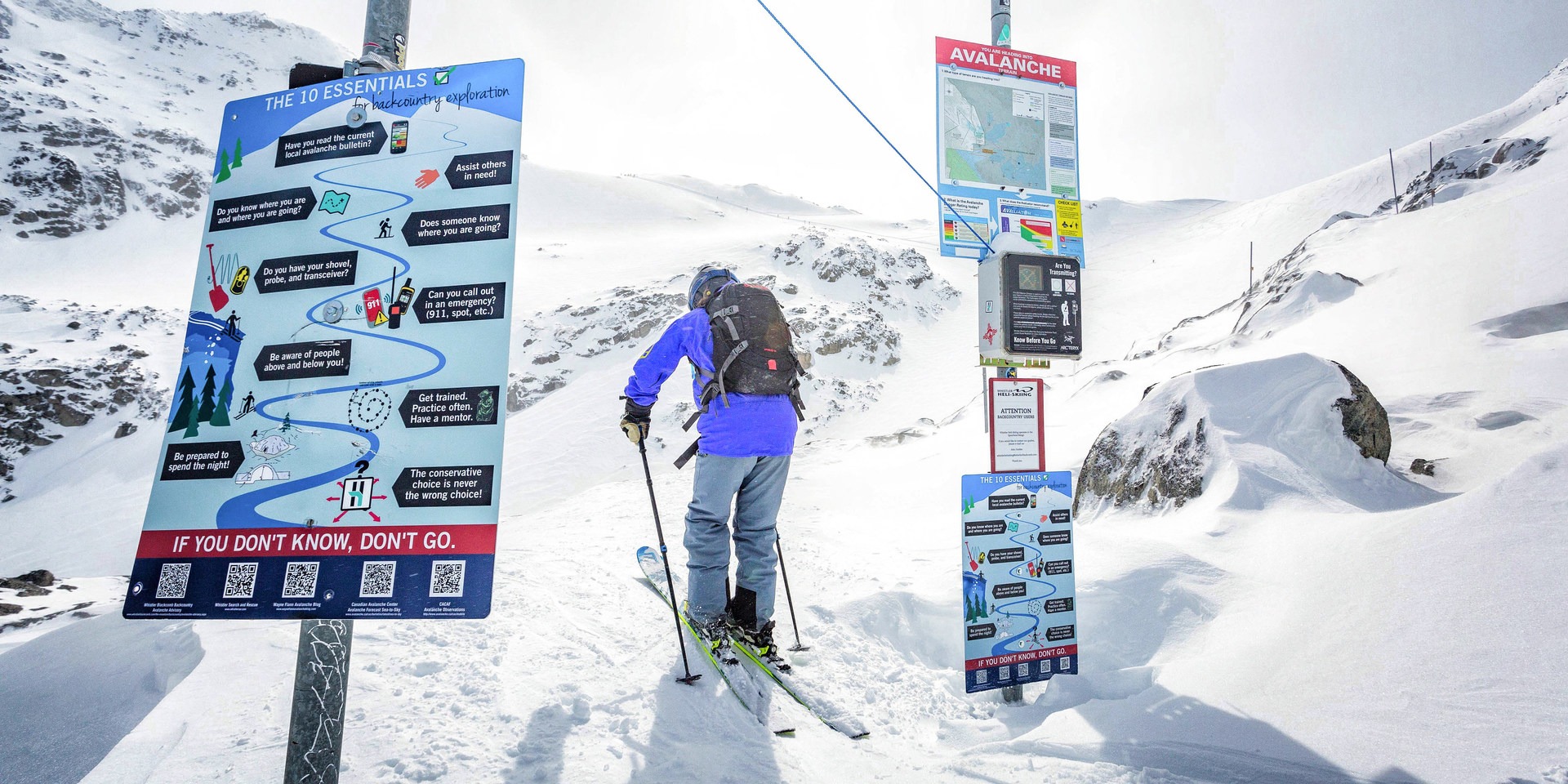You are here
On November 26, 2017, at Lake Louise Ski Resort, three snowboarders traversed from the Summit Platter lift into the West Bowl, a popular "slack-country" area immediately adjacent to the resort. The first snowboarder on the slope triggered a size 2.5 avalanche, 200 meters wide and 50 centimeters deep, which ran 200 meters downslope. Fortunately, none of the group were buried, Ski Patrollers were able to make voice contact, and the two remaining above the slope hiked back inbounds while the rider downslope traversed back to the ski area boundary. None of the group were carrying avalanche rescue gear.
The purpose of this writing is not to publicly shame these snowboarders for poor decision making or chastise them for their unpreparedness. We skiers and snowboarders who leave the ski area boundary are exposing ourselves to some level of risk, which we do our best to evaluate using imperfect information and methods. There are a lot of gray areas involved, and I feel that it’s unfair and unhelpful to sit on the couch and judge people for their mistakes while enjoying benefit of 20/20 hindsight. I can admit that I’ve personally made some questionable (bad, irresponsible) decisions in my snowboarding career, including riding the same zone where this avalanche occurred, many many times, without any avalanche rescue gear. I’m not alone in this-go stand at the top of the Summit Platter, and you’ll see group after group of skiers and riders without backpacks on dropping into the West Bowl all day long. And you’ll more than likely have the same experience at just about any other ski resort with lift-accessed backcountry areas.
The incident at Lake Louise was undoubtedly a great learning experience for those involved, and for the rest of us it provides a great example of the dangers that lurk just outside ski area boundaries. It’s easy to understand how skiers and snowboarders can be tempted by the untouched snow just on the other side of a rope line, or how underprepared riders might follow more experienced backcountry skiers into these areas, thinking that it’s safe to do so.
The so-called "slack-country" gives us a false sense of security, with its easy access and proximity to controlled terrain and ski patrol, as well as the increasing numbers of other skiers and riders we see ducking the ropes and dropping in. Even the words "sidecountry" and "slackcountry" seem like toned-down, less dangerous versions of the backcountry, when in reality they are one and the same. Sure, in some ways you might be a little bit safer here than in remote areas; if things go sideways, help will arrive sooner and evacuation times will likely be shorter. But by the same token, you’re more likely to put others at risk when an avalanche is triggered in lift-accessed backcountry terrain, either by burying other skiers on the slope below or by forcing ski patrol or other skiers to expose themselves to risk in order to rescue you.
In some cases the location of the ski area boundary is chosen specifically because the terrain just outside of it has elevated risk factors such as terrain traps and start zones, so it might in fact be even more dangerous than other more remote backcountry areas nearby. Other times the boundary is set in order to prevent people from riding down the wrong side of the mountain and getting lost in the wilderness, which happens multiple times each year in my hometown of Whistler, British Columbia, as well as many other resorts.
Personally, I love ski hills with open boundary lines. Having access to lift-accessed backcountry terrain is an amazing privilege, and the last thing any of us backcountry users want to have happen is our passes being confiscated for going out of bounds. With a little bit of knowledge and preparation, we can all safely enjoy the easy pow laps off the chairlift until our knees give out, and then spend the rest of our long lives exaggerating how good it was.





Comments
Sign In and share them.